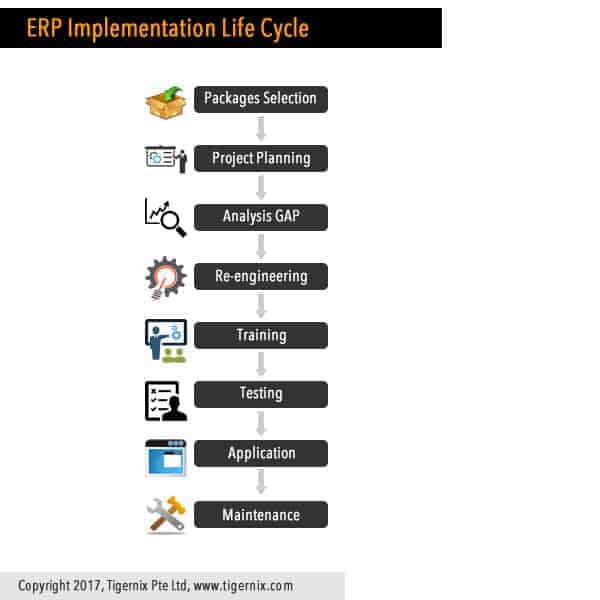
Implementing an ERP software reaps many benefits for a business, from streamlining your business operations to reducing your company costs, which makes an ERP system is a must every business should have.
Yet, ERP implementation is not one day or one week process, as the implementation comes with a set of 8 important steps. To help those who are considering investing in a quality ERP system, here we discuss the ERP implementation life cycle, so you can get a better idea about the process.
Selection of packages:
This is the very first stage of the ERP implementation life cycle, where the company has to select a good ERP package that suits your company and your business needs, with a proper research. When selecting an ERP system, degree of matching and customization it can provide your business and stability and future assistance of the software provider, are few things you should keep in mind for a successful ERP implementation.
Project Planning:
At this phase of the ERP life cycle, you should come up with a clear and realistic plan for the process. This includes scheduling timelines and deadlines for projects, identifying roles and assigning responsibilities for the ERP implementation process.
Analysis GAP:
Being one of the important and crucial steps in the ERP life cycle, GAP analysis is the analysis done to create a clear and complete model to identify the current state of the company and the direction it will head to in the future depending on the business goals of the company.
Re-engineering:
This is where the human factor of the business comes to spot light. The step involves many changes and alteration in the number of employees and job responsibilities which should be performed carefully as it directly affects the efficiency of the company.
Training:
To enhance the efficiency, having a group of employees who are well trained and familiar with the new system is essential which is why this step becomes important in the ERP implementation life cycle.
With the help of the software service provider, at this stage, the company should start training their employees for the ERP system who been selected after considering the following qualities; willingness to change, the ability to learn new thing quickly and accurately and familiarity with new technology.
Testing:
Testing is not an exception for a new system to run smoothly. Here the company will test real life extreme scenarios like user error detections, system overload, simultaneous multiple user log-ins, data security and more. This will help the company to identify errors, bugs and weak links before the implementation.
Application:
It is in this stage the ERP system’s actual implementation happens. After the data conversion and data base work is over, the implementation of the new ERP system will be done and then, the old system will be removed.
Maintenance:
After implementation, maintenance is the lasts step of the ERP life cycle where the constant maintenance of the system involves. This is the where the employees will learn to face and deal with system related problems while the system should be updated corresponding to the future updates of the software solution provider.






